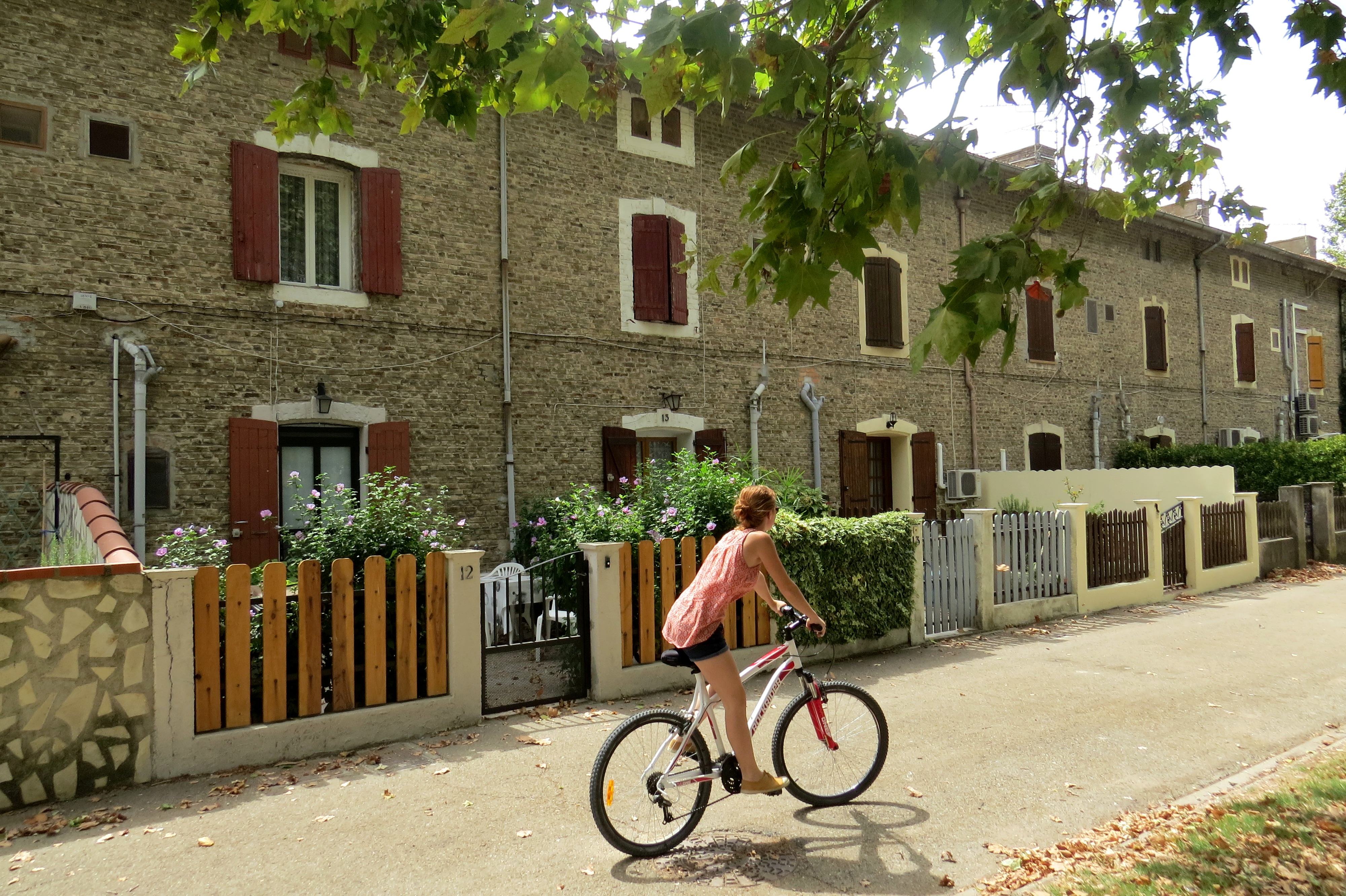
By bike, an unusual village in the Camargue
Salin-de-Giraud fascinates and impresses with its long rectangular buildings with bricks imported from the north. Nicknamed "the coron of the south", the city was built on a chequerboard plan typical of the workers' cities of the second half of the 19th century. This route offers a walk in the heart of housing workers separated by public or private gardens. Browse the city to discover the old factory and its mansion. An atypical landscape in this Provencal environment!
12 points of interest
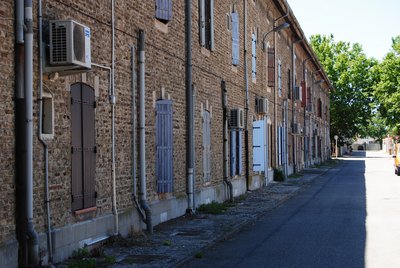
Anciennes cités ouvrières - Chloé Scannapiéco - PNR Camargue  Patrimony and history
Patrimony and historySolvay district
The Solvay coron was built between 1896 and 1902 by the Belgian company having imported its red brick architectural model. Salin is nicknamed "coron du sud" because of these dwellings designed on the model of the working cities of the north. This model reproduces the hierarchy of the enterprise, from the director's house to the workers’accomodation. Impregnated with paternalism, the Solvay company built for its employees, among others things, a hospital, a school group but also arenas.

Arènes de Salin-de-Giraud - Marjorie Mercier - PNR Camargue  Patrimony and history
Patrimony and historyThe arenas of the village
Built in the twentieth century, the arena of Salin-de-Giraud is part of the social arsenal that the Solvay factory had set up for its staff. The workers from Gard wanted to have a place for their passion for bulls. The friar poet Carle Naudot, foreman at the Solvay factory, created the bullfighting club Prouvenço Aficioun to animate this enclosure, one of the first buildings of its kind in Provence. Today, arenas are a nerve center for the socio-cultural activity of the village.

Vue sur Salin-de-Giraud - Opus Species - PNR Camargue  Patrimony and history
Patrimony and historyThe industrial village of Salin-de-Giraud
In the mid-nineteenth century, 10,000 ha were developed by the company Henri Merle (Péchiney thereafter). Solvay settled next. The village of Salin-de-Giraud is born from the double implantation of Péchiney and Solvay in the late nineteenth century and their need for salt. The two companies turned to outside labor, initially from surrounding areas and then of Italian, Armenian and Greek origin, to carry out this painful work of salt exploitation.

La place Carle Naudot - Juliette Primpier - PNR Camargue  Patrimony and history
Patrimony and historyThe Carle Naudot square
It was here that people from Solvay and Péchiney met. In balls, at school. For a long time, the Carle Naudot square was the only link between the two parts of the village. C. Naudot worked at the Solvay design office. He was a municipal councilor and special assistant of the village, he is also at the origin of the bullfighting club (1901). Photo-ethnographer, the steel silhouettes scattered around the village are made from Saliniers photographed by C. Naudot.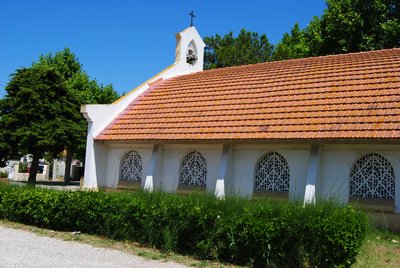
Eglise catholique de Salin-de-Giraud - C. Scannapiéco - PNR Camargue  Patrimony and history
Patrimony and historyThe catholic church of Salin-de-Giraud
The Catholic Church, which belongs to the Compagnie des Salins, is made of lightweight material. The chapel, with its single nave, rests on concrete walls punctuated by buttresses. The chapel was built in 1934-1935 and is covered by a low vault in broken cradle. In the era of industrial paternalism, workers are encouraged to practice the Catholic religion. Concerning education, the Péchiney society uses religious education, the Solvay group chooses secularism.
Place du quartier Péchiney - Kiosque à musique - Juliette Primpier - PNR Camargue  Patrimony and history
Patrimony and historyThe Péchiney district
The Péchiney district has a less structured and organized organization than the Solvay district. It is more the result of a policy of temporary development and reoccupation of vacant buildings. Less structured, this district gave way to individual and collective initiative. So we can meet with DIY sheds, gardens in front of the house, shortcuts. It is possible to walk and walk from one street to another without forcing the privacy of its inhabitants.
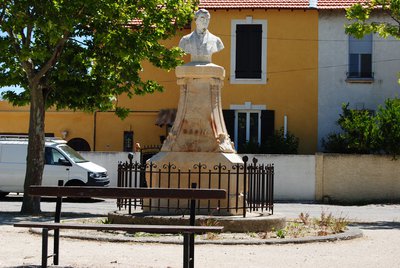
Statue Adrien Badin - Chloé Scannapiéco - PNR Camargue  Patrimony and history
Patrimony and historyThe Adrien Badin square
In 1900, Adrien Badin was hired at the Salindres factory (Gard) by M. Péchiney. An essential figure in the development of the Company, he is appointed director after the departure of Mr. Péchiney. He established a system of retirement and health protection for his workers, he built "modern" cities. The company will experience a rapid development, from 3 to 12 factories in 1917 ! One of the neighbourhoods will long be called Badinville. A statue has been erected in his memory.
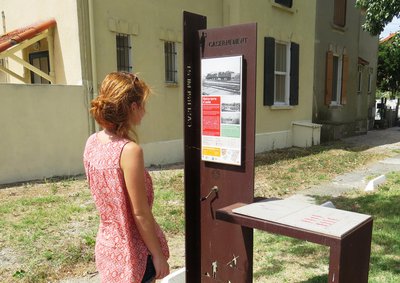
Visiteuse intéressée par le panneau d'information "Le casernement" de l'association "Echappées salinières" - Juliette Primpier - PNR Camargue  Patrimony and history
Patrimony and historyThe barracks
During the First World War, many of the Pechiney Company's workers did not return, so Italian, Greek, Armenian, Spanish and Maghrebi immigrants came to supplement the workforce. The old train linking the city of Arles to Salin-de-Giraud allowed to ensure their arrival. They were installed in the military quarter of Péchiney district which was converted into workers accommodation. It has therefore welcomed a labor force, composed for the most part, of immigrants.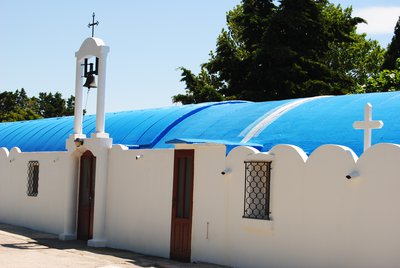
Eglise orthodoxe de Salin-de-Giraud - Chloé Scannapiéco - PNR Camargue  Patrimony and history
Patrimony and historyThe Orthodox Church of Salin-de-Giraud
The flourishing industry Solvay factories (established in 1895) requires manpower, especially at the time of the First World War when the French are at the front. The Greeks, who arrived between the two wars, settled by family reunification. They kept their customs and religion while integrating themselves into the life of the village. A church for Orthodox worship was built in 1952. The Salins du Midi company will donate it to the Greek Orthodox Metropolis of France in 2009.

Capucine Ser - PNR Camargue  Patrimony and history
Patrimony and historyThe sports district
The workers live in difficult conditions and to avoid any revolt the employers developed a social policy in the mid-nineteenth century. The worker becomes dependent from his company who offers him a housing. The company organizes leisure activities : the music, the library but also the sport. Impregnated with paternalism, the Solvay group took early initiative to organize leisure, a way to ensure the cohesion of employees, the sports bar is present in this neighbourhood.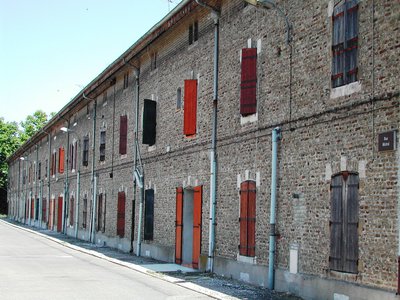
PNR Camargue  Patrimony and history
Patrimony and historyThe corons
The architects and planners of Solvay have drawn ex nihilo a working-class city that looks like corons from the north. A coron is a group of dwellings typical of Western European regions where workers live with their families. Unlike the working class, the houses are terraced and an alley separates the corons located opposite. The factory is usually located near the workers' accommodation.. The corons are one-storey dwellings with a small vegetable garden at the rear.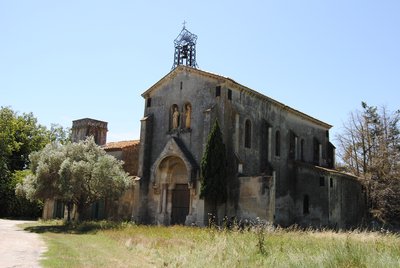
Eglise du Barcarin - PNR Camargue  Patrimony and history
Patrimony and historyThe Barcarin church
The Barcarin church stands apart from the village of Salin-de-Giraud, along the river. built in the 19th century. under the prestigious name of Saint-Trophime, it will shelter only for a few decades the faith of the saline and other riparians of the Rhone. Its discreet presence testifies as much to the difficult organization of worship in the deepest part of Arles, as to the ravages of the mouth of the Grand Rhone. The cult is practiced today in a modern chapel of the village.
Description
Departure from the Tourist Office:
Back to the Tourist Office, head to the right. Turn right at the junction to reach the Boulevard de la Gare and continue on the boulevard.
Departure from the Boulevard de la Gare car park :
Go to the right, back to the car park, on the boulevard.
1 - At the roundabout, turn left. Continue on the Boulevard de la Camargue for 300 m, pass the Saint-Trophime Catholic Church and continue until Adrien Badin Square. After the bandstand, head to the left on Rue du Jeu de Mail. Continue straight for 400 m in the residential area until the Greek Orthodox Church. Then retrace your steps to Boulevard de la Gare.
2 - At the end of the Gardians square, located after the Boulevard de la Gare car park, head to the right then turn the second left on the rue des Ecoles. At the stop sign, turn right on the Rue des Arènes.
3 - turn left on Rue Mireille then, at the giving way sign, turn left towards Rue Pierre Tournayre.
4 - turn to the left on the Rue de la Provence. At the intersection with the Rue des Arènes, turn right. At the junction with the Boulevard de la Gare, cross straight ahead, leaving the bullring on the right.
5 - After the bullring, go to the right Rue Louis Pasteur and continue to the stop.
6- At the intersection with the D36, turn left and continue for 400 m After the traffic light and the bridge of the Giraud Canal, turn right on the C142 of the Barcarin Church.
7 - After the Barcarin Church, take the path along the river on the right. At the old Solvay loading platform, take the path to the right after the barrier that runs along the wall. This path allows to join the village by the Joseph Imbert avenue, take the first path on the right that leads to the Rue de la Victoire to return to the Tourist Office.
- Departure : Tourist Office, Salin-de-Giraud
- Arrival : Salin-de-Giraud
- Towns crossed : Arles
Forecast
Altimetric profile
Recommandations
Respect the road code on roads open to public traffic.
Caution on the D36!
Information desks
Domaine de La Palissade
BP 5, 13129 Salin-de-Giraud
OT Salin-de-Giraud
1 Boulevard Pierre Tournayre, 13129 SALIN DE GIRAUD
Transport
Envia transport network : Agglo 10> Arles / Salin-de-Giraud by Gageron and Villeneuve >> www.tout-envia.com; www.pacamobilite.fr
Access and parking
38 km south-east of Arles, by the D570 and the D36.
Parking :
Access
- Emergency number :
- 114
More information
Report a problem or an error
If you have found an error on this page or if you have noticed any problems during your hike, please report them to us here:

